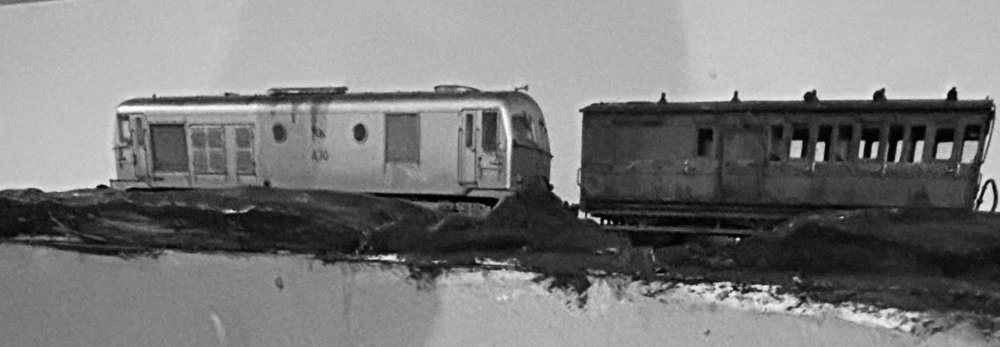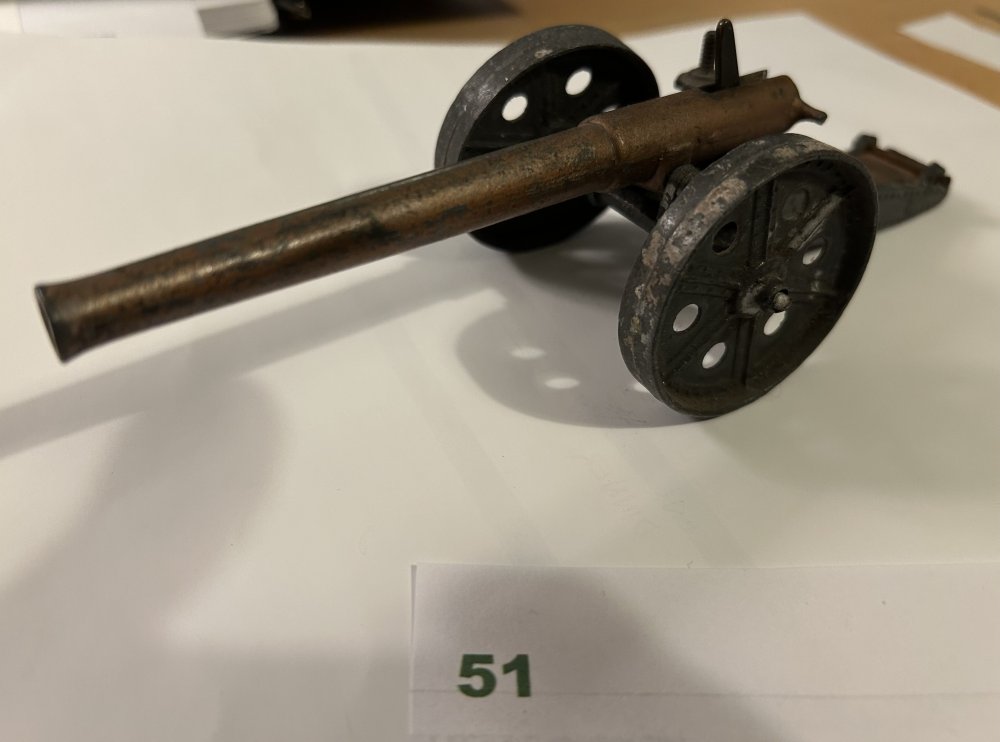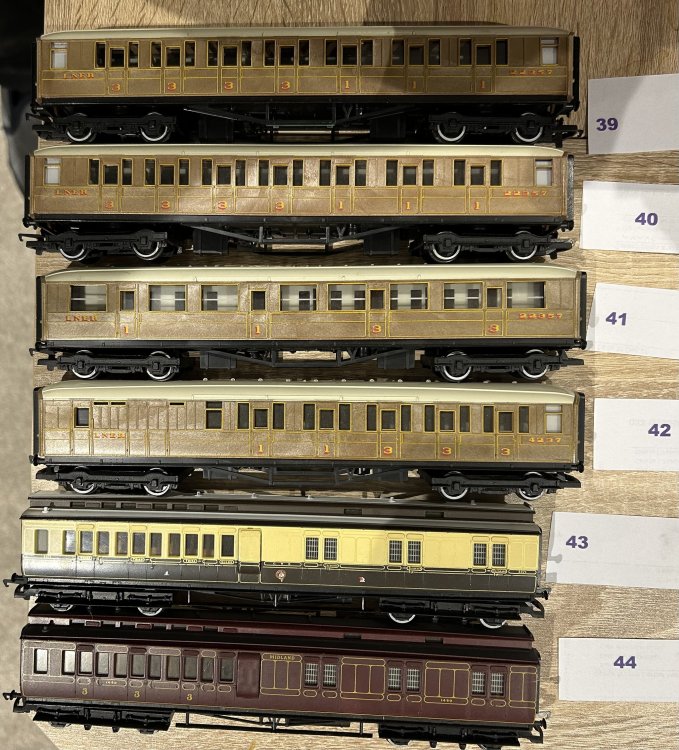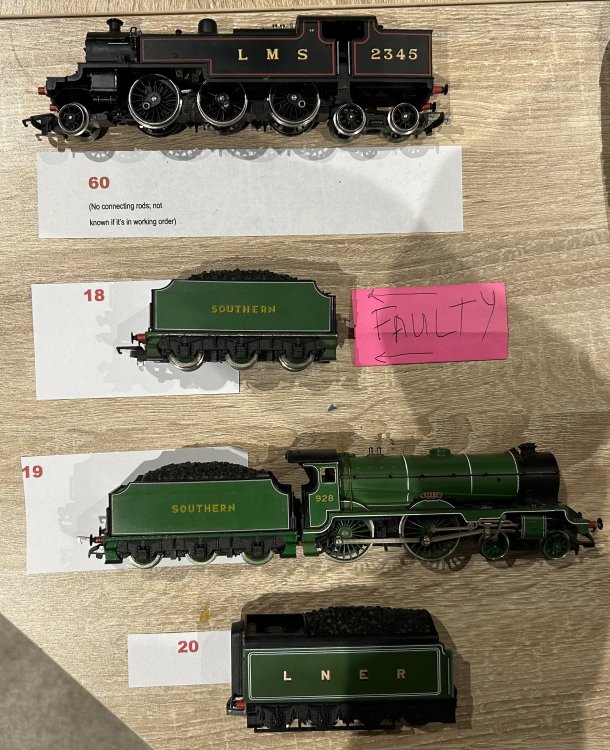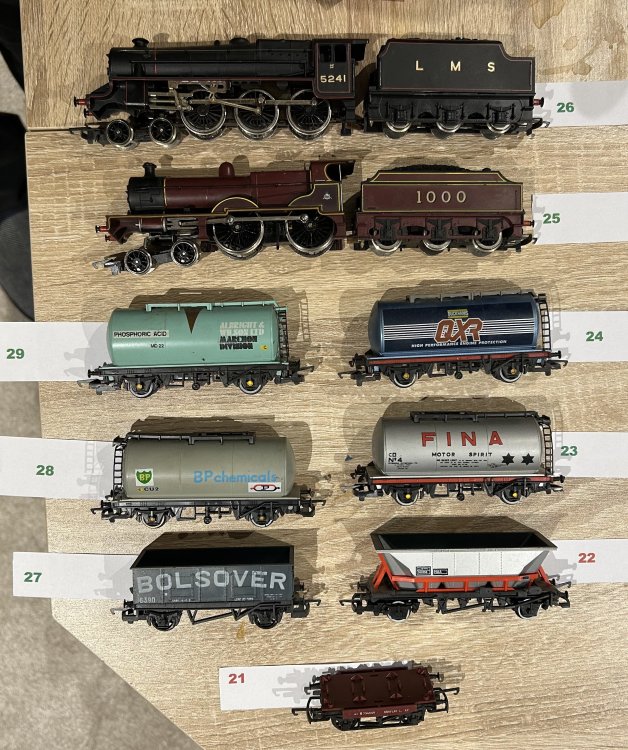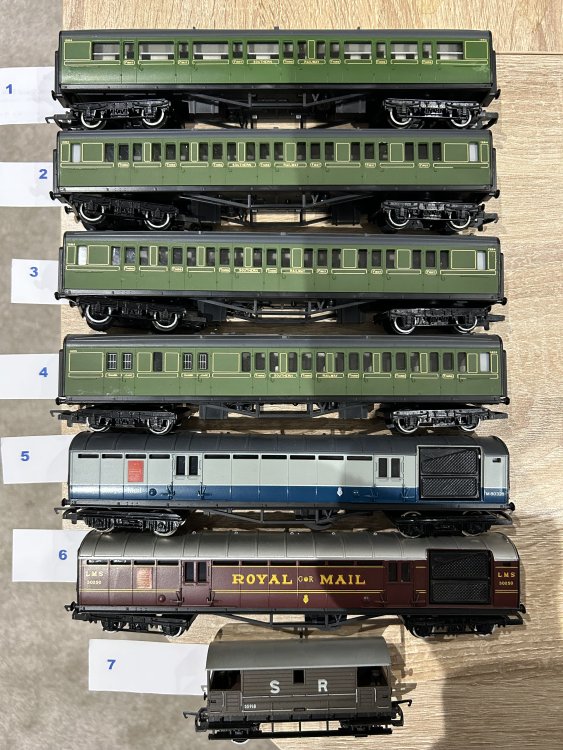-
Posts
15,837 -
Joined
-
Last visited
-
Days Won
393
Content Type
Profiles
Forums
Events
Gallery
Blogs
Store
Community Map
Everything posted by jhb171achill
-
I’m going to print that off as a guide!!
- 36 replies
-
- 1
-

-
- o gauge layout
- irish outline
- (and 2 more)
-
These look amazing. May I ask if an 00 gauge version is likely?
- 36 replies
-
- 1
-

-
- o gauge layout
- irish outline
- (and 2 more)
-
Yes, still an issue. Won't open on mobile at all, and when it does on this ("big" computer), some pictures won't open.
-
"Voiding the Warranty" - Mol's experiments in 21mm gauge
jhb171achill replied to Mol_PMB's topic in Irish Models
Indeed, and their various translations of Bray have all been held to be suspect. But - to go to a point Mayner made which I had omitted to remember - a private siding would not, indeed, have had any sign on the railway at all, let alone a bilingual one. These were only for railway signage and name boards, particularly in the passenger parts of stations. By law in Ireland a private company (like a mill) isn’t, and never was, under any compulsion to have bilingual signage, whereas a state utility (like post-nationalisation (1950) CIE) was. The GSR was never a nationalised utility, but in its station signage it behaved as one, although there were many examples of stations which lasted well into CIE times with original pre-grouping English-only signs. So for “Mol’s Mill”, the oval device of the milling company would, if strict accuracy is preferred, really be the only show in town. -
"Voiding the Warranty" - Mol's experiments in 21mm gauge
jhb171achill replied to Mol_PMB's topic in Irish Models
That Webb seal looks well! Maybe a tidied up, black-on-white version, enlarged? The GSR bilingual signs of the late 1920s were enamelled, so they were flat. -
"Voiding the Warranty" - Mol's experiments in 21mm gauge
jhb171achill replied to Mol_PMB's topic in Irish Models
I’d go with the second font - I think it stands out best. The “Q” on the last one is no more “Irish” than mandarin! -
Gauge of interest: Alphagraphix 4mm Irish kits
jhb171achill replied to GSR 800's topic in Irish Models
Agreed. Behind the TPO appears to be a newish laminate or else 1951-3 era CIE standard. The DSER coach would only be there to carry mailbags. -
Gauge of interest: Alphagraphix 4mm Irish kits
jhb171achill replied to GSR 800's topic in Irish Models
-
Irish Railway News ‘Enterprise Watch’
jhb171achill replied to IrishTrainScenes's topic in General Chat
I'll be Enterprising again soon into the new year. Hope it's a DD, not a 29 class! -
Gauge of interest: Alphagraphix 4mm Irish kits
jhb171achill replied to GSR 800's topic in Irish Models
Yes - I had actually thought it was long gone by then. -
Gauge of interest: Alphagraphix 4mm Irish kits
jhb171achill replied to GSR 800's topic in Irish Models
That's exactly what it is! And behind it is what by then was a VERY rare DSER survivor! -
The last market day before Christmas, 1957. On a bleak December morning, Thursday 19th December 1957, an “A” class replaces the usual J15 on the morning passenger train, which has an extra coach on today. An influx of dealers had the pubs in Castletown busy last night. Here it is seen crossing a badly flooded Carrowmore Bog about 8 in the morning, halfway down the Dugort Harbour extension line.
-
Gauge of interest: Alphagraphix 4mm Irish kits
jhb171achill replied to GSR 800's topic in Irish Models
After decades, I've allowed myself to be persuaded by a friend who does a lot of brass stuff himself, to join what Galteemore of this parish calls the "Burnt fingers brigade"! Incidentally, for anyone making up those Aplhagraphix kits out of card as they are, every single one of the liveries shown above, true to form, is wrong, in some cases in every single detail, even the base colour! -
Gauge of interest: Alphagraphix 4mm Irish kits
jhb171achill replied to GSR 800's topic in Irish Models
By the end of six-wheeled passenger carrying days, the bulk of the remaining stock was passenger vehicles of MGWR origin, but brakes of GSWR origin! DSER stock had been purged already - a late 1940s CIE pogrom of much of what was south-eastern in origin had ensured that only a handful of DSER bogies saw much life in the 1950s, and rarely off their home turf too. Senior even remembered an influx of Southern and Midland stock onto the Harcourt Street line (on which he had commuted since 1922/3) almost immediately after the amalgamation in 1925. Wisht Caark stuff, boy, didn't stray off that system. I'm unaware of anything with a "B" after the number actually carrying passengers outside the CBSCR system to the end. Certainly, their 6-wheelers were exceptionally basic and in later days barely even fit for occasional excursions. So, a TYPICAL six-wheeled excursion train in the 1950s or early 60s, would likely consist of a GSWR full brake or brake 3rd, maybe one GSWR type and half a dozen MGWR types. As Mol_PMB suspects, several types' there were at least several Cusack-roof types (new, probably, about 1905 and among the last six-wheelers built by any compaby other than the BCDR) in Cork. One at least was a former first, which I've seen pictures of. We now have the Hattons Genesis stuff, which does as GSWR types, hence my comments elsewhere that the MGWR type, being more numerous in diesel days, is something we could do with. Worth adding that the few six-wheeled NON passenger carriages (full vans) which survived a few years longer (I think about 6) lasted in traffic until dates between later in 1964, and the last officially withdrawn in 1970. However, the last date there is proof of one in traffic is on the Galway Mail in summer 1968, and another possibly on the Cork mail the same summer, by which time only 2 or 3 were still nimibally in use. With the advent of the "Dutch" and "BR" vans imminent, they were gone. While the last was officially withdrawn in 1970, a 1969 photo I saw somewhere shows that it is clearly out of use for some time. Maybe they had just forgotten about it. Of the few that lasted after 1963, and least three were repainted in black'n'tan, hence the Hattons model being the only 6-wheeler offered in that livery. The ones withdrawn in 1964-66 had remained green. So, amongst our models - we may have a nice rake of hattons stock, but the van to run with them is green. The few painted orange and black were done so AFTER all the (green) passenger-carrying ones were torched, and in the new livery would not have run among their own kind. Instead, expect them to be surrounded by Bredin * CIE bogie mail vans, tin vans, and on passenger trains behind laminates, Park Royals, old wooden bogies in the new livery, the odd old Bredi9n, and just about possibly, a brand-new Craven. A black'n'tan loco or a grey and yellow B121 up front, of course, as they were gone before "Supertrain".......... -
Gauge of interest: Alphagraphix 4mm Irish kits
jhb171achill replied to GSR 800's topic in Irish Models
"The Hearse" was a relic which ended up on the Tramore line to carry parcels and prams on excursion summer Sundays. As an "everyday" vehicle it's not really a suitable prototype as there weren't many of them, and they weren't generally used in traffic. -
Gauge of interest: Alphagraphix 4mm Irish kits
jhb171achill replied to GSR 800's topic in Irish Models
Well, I’d be up for three MGWR 6-wheel thirds (or seconds), so that’s half a minimum batch. -
Gauge of interest: Alphagraphix 4mm Irish kits
jhb171achill replied to GSR 800's topic in Irish Models
The glaring omission is the standard MGWR 6-wheeled third, produced in large numbers from the late 1880s to the early 1900s. These were extremely well built and after 1925 to be seen as far afield as Donaghadee and Bangor (several on loan for some years to the BCDR), Bantry, Baltimore, Rosslare, Fenit, Harcourt Street, Youghal and Birr, as well as every corner of their home MGWR territory - right up to the very end of six-wheelers being used to carry passengers in 1963. In fact, the very last set of six-wheelers still in passenger use that year was the spare set for rush hour and Youghal weekend excursions, based in Cork. And most of these were MGWR types, not GSWR. For any layout 1925-63, they’re essential. Fun fact; in 1964, the Record Society managed to persuade the powers that be to allow one - by now withdrawn for a year - to be used for society members going over to Albert Quay from Glanmire for an “outing”, as the society still quaintly refers to its jaunts…. (visions of the participants being “let out for the day”, closely monitored by men in white coats, with an all-important kit of compulsory medication at hand…..) As I digress and ramble; old age permits such things - I’ve been a member of the IRRS for 56 years, so I remember Drumcondra and the even-then venerably antiquated ethos of meetings, where instead of a member “giving a talk” or “presentation” about something, they “gave a Paper” on the subject. Yes, even then it sounded antique, and I attended many such “papers”….. and then started “giving” them in later life. It’s a wonder the jax wasn’t called a “flushing water closet”…. Jayyysus. If I’m ever advertised to the gricing fraternity as “giving a paper” on something, fer gawds sake don’t go - I wouldn’t! BUT; to revert. If he can do a MGWR 3rd, I’ll take three to start things going. -
It was on a wooden board at first, on Maedb at least, according to jhbsenior (possibly only for works grey photo?) but soon replaced by a steel sheet. As for transfers applied over rivets, anyone who’s ever tried applying a waterslide transfer to an uneven surface on a model will have a lexicon of associated rude words……!
-
OBB HOe layout "Connafeld"
jhb171achill replied to Georgeconna's topic in Continental European Modelling
That’s what he gets for not specifying O gauge instead of N….. -
OBB HOe layout "Connafeld"
jhb171achill replied to Georgeconna's topic in Continental European Modelling
A lot of bits and pieces are cheaper on Temu nowadays…. Scenery especially. -
OBB HOe layout "Connafeld"
jhb171achill replied to Georgeconna's topic in Continental European Modelling
I recall a journey on the Pinzgau line in the late 1970s. We left Krimml behind a 2095 class diesel - same as that - with four bogies (still in the old dark green livery) on what was techncially a mixed train. No goods on the back, tough. But at Mittersill, after stopping to let passengers on and off, he pulled forward and reversed into a siding on the up (downhill!) side, and picked up three vans exactly like those show, before proceeding to Zell-am-See. Sadly, I missed steam on this line. They now have a steam loco on it for tourist trains, but it's not a "native" one; it came from the Gmund system further east. -
I am assisting a friend in clearing her elderly dad’s house. He’s in a home now and wants to sell all this stuff. Stock is situated in Dublin but can be possibly be delivered in and around the Lisburn / Belfast area too, though probably not till the new year. Postage is extra. Whatever it is that you want posted, I’ll find out the cost and advise you first. No stock has boxes but all are pristine unless otherwise stated. Locos are believed to be fully working unless stated but have not been tested and are sold at buyers risk. All are DC. Prices are in euros, and “lot numbers” will make identification easier. Locos €50 Carriages €20 (6 for €100) Wagons €5 Lot 53 is older, coarser wheels, €5 including two small model cars. Lot 51 is a genuine antique cast metal toy cannon (it works!) which dates from the 1920s. €25 for that.
-
Which is probably why the Society gave her a lick of paint fairly pronto!
-
But that was RPSI livery. It arrived in Whitehead in badly weathered dark grey. The red appendages and black paint are pure NCC / UTA culture! The story was that those in charge of such matters at Whitehead simply didn't like the grey livery.....
.png.c363cdf5c3fb7955cd92a55eb6dbbae0.png)




